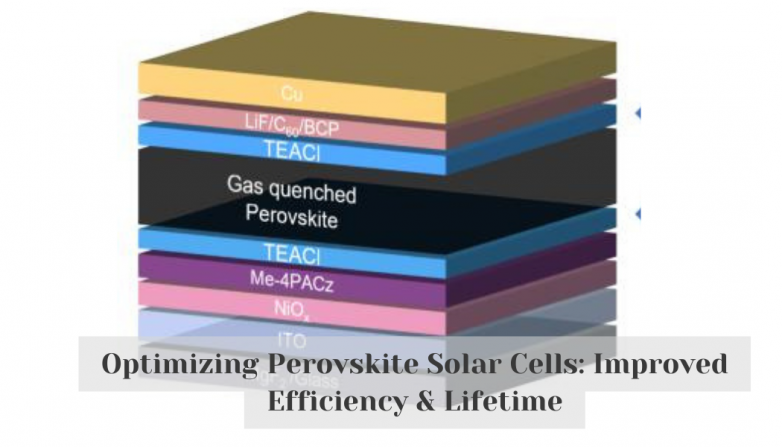Optimizing Perovskite Solar Cells: Improved Efficiency & Lifetime
- Perovskite solar cell technology takes a step forward with improved upper and lower interfaces, resulting in a conversion efficiency of 24.3%, long-term stability and efficiency of up to 22.6% in mini-modules.

Researchers at imec and University of Hasselt in Energyville, Belgium recently improved two key perovskite interfaces for solar cells to increase efficiency and lifetime. The upper and lower interfaces were treated with 2-thiopheneethylammonium chloride (TEACl) resulting in a conversion efficiency of 24.3% and a short-circuit density of 24.5 mA/cm2, an open-circuit voltage of 1.17 V, and a fill factor of 84.6 percent. After 1,000 hours of operation under one-sun illumination, the cells retained 97% of its performance and 88% of their initial performance after 1,850 hours of aging. Upscaling to a mini-module with an active area of 3.63 cm2 achieved an efficiency of 22.6% and a fill factor of 82.4%. These findings contribute to the development of commercially viable perovskite solar cell technology.
Can Perovskite Solar Cell Technology Be Commercially Viable?
- Perovskite solar cells offer a potential alternative to traditional silicon solar cells due to their low cost and flexibility.
- The increased efficiency and lifetime achieved by researchers at imec and University of Hasselt show promise for commercial viability.
- A practical mini-module was realized with an efficiency of 22.6% and a fill factor of 82.4%.
- Further research and development is needed for perovskites to be ready for commercial use, including in terms of increased stability and scalability.
- The ability of perovskites to be used in a variety of applications, from roof-top solar installations to wearable electronic devices, could allow them to become commercially viable in the future.
Also read
- Revolutionizing Solar Power: Tandem Cells on the Rise
- Boosting Perovskite/Organic Solar Cell Efficiency with New Strategy
- Revolutionizing Solar Energy: Key to Efficient Organic Cells
- Revolutionary Solar Cells Power Drone with Unprecedented Efficiency
- Unlocking Perovskite Secrets: Next-Gen Solar Cell Breakthrough
